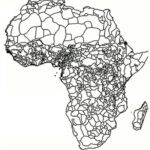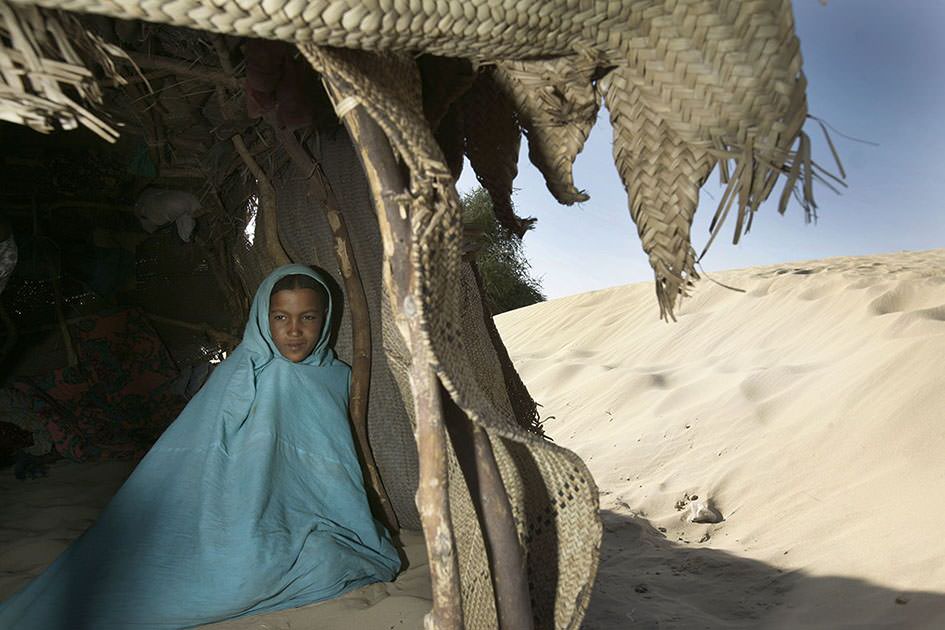(Click to enlarge)
By Martin van Vliet
Once considered Africa’s flagship of democracy, Mali has turned into a shipwreck of anarchy seemingly overnight. A military coup ousted Malian President Amadou Toumani Touré in March 2012, and within weeks state authority completely withered in the northern regions of Gao, Timbuktu and Kidal. Covering an area as large as the state of Texas, these regions are currently controlled by three “hybrid organizations” blending Islamic radicalism with transnational crime. Deeply concerned by the security threats posed by such a sizeable sanctuary for terrorists, the international community has pressured the Malian government and military to overcome internal wrangles as preparations for an international military intervention are underway.
Restoring state authority and legitimacy to northern Mali will require a radical break with the governance and security strategies adopted by Malian political elites during previous decades. The Malian state has recurrently relied on local militias in response to security threats in the northern regions, thereby fueling rivalry between and within local communities. Falling back on such a “militiatary”1 strategy in the context of the current crisis will be counterproductive to the efforts undertaken to restore state authority and legitimacy and could provoke a civil war.
This article will show why northern Mali is prone to rebellion. It will then explain how the state has supported militias to quell these frequent uprisings, argue that the state might reemploy that same strategy to unseat Islamist militants in the north, and identify what results an international military intervention might bring.
In the Margins of Development
(click to enlarge)
Situated in one of the poorest countries in the world, development prospects in Mali’s desolate and desert-like northern regions are particularly restrained. Most of Mali’s economic and agricultural resources are confined to its southern regions. In the north, soil fertility is extremely poor, rains are sporadic and irregular, access to water is restricted and severe droughts occur frequently. Agricultural GDP per capita is inferior to any other region on the continent, while infant mortality rates are high. Covering almost 70% of the national territory, the northern regions only host a mere 10% of the population. Government investment and international aid have therefore long been primarily oriented toward the south.2 Northern pastoralist communities were particularly marginalized by state policies adopted under the socialist regime of 1960-1968, as well as under the military rulers from 1968-1991 that strongly favored sedentary constituencies.
Rebellion and the “Militiatary”
Just as the Malian state relied on non-state actors to deliver services and invest in northern Mali, it has also depended on others to perform its core function of security provision. Far from obtaining a monopoly on violence, the state repeatedly adopted a “militiatary” strategy to respond to the series of armed rebellions that occurred in northern Mali during the last half century.
The first violent conflict erupted when a small group of Tuareg leaders took up arms to rebel against their forced inclusion in the Malian state shortly after the country gained independence in 1960.5 The Malian army brutally crushed the revolt and kept the northeastern region under strict military control for decades.
A second Tuareg rebellion emerged at the start of the 1990s. Tuareg society consists of multiple clans (confederations) and is stratified along strict hierarchical lines whereby “subordinate” groups have increasingly contested “dominant” castes. The renewed rebellion soon fragmented along these tribal and caste lines, with different militant Tuareg groups fighting each other. The conflict gradually evolved into a small-scale civil war involving other—notably Arab and Songhai—communities. Frustrated by the army’s poor response to the Tuareg revolt, senior Songhai officers deserted from the army and created the Ganda Koy militia to defend the interests of the sedentary Songhai population.8 Particularly violent confrontations took place between the Ganda Koy, the predominantly Arab Islamic Front of Azawad (FIAA) and the Tuareg Popular Movement for the Liberation of Azawad (FPLA).
Political elites in Bamako exploited these intra- and inter-communal tensions. The army actively cooperated with the Ganda Koy to combat the Tuareg and Arabic resistance groups. By adopting a “militiatary” strategy, the Malian state deliberately ensconced rivalry and mistrust between local communities in the north. It was mainly due to the conciliation efforts undertaken by local traditional and religious authorities, supported by the international community, that a fragile peace emerged by 1996. Almost 1,500 Tuareg rebels were subsequently integrated into the army which, to the anger of other local communities, made former rebels responsible for maintaining security in the north.
Transnational Crime, the “Militiary” and State Collapse
Situated on the margins of formal state development opportunities, northern Mali gradually took center stage within various transnational smuggling networks. Subsidized consumer goods from both Libya and Algeria have long been popular contraband sold in northern Mali, while transnational cigarette smuggling networks rose to prominence in the 1980s. Demand for small-arms in the wider region prone to conflict particularly increased throughout the 1990s. During the course of the last decade, transnational drug networks started to benefit from this well developed “social infrastructure” underpinning the smuggling economy in northern Mali. Conflicts between competing smuggling networks proliferated concordantly, fueling both intra- and inter-community tensions. Traffickers established private militias to protect their business interests.
By 2006, internal rivalries within Tuareg society instigated yet another armed revolt. Leaders of the previous rebellions had witnessed what they considered their subordinates obtaining leading positions within the Malian army. Fearing a significant loss of influence, they decided to take up arms again.13 In response to this security threat, Touré fell back on the “militiatary” strategy; he proactively supported the mobilization of “subordinate” Tuareg to fight the rebels but also leaned on private Arab militias established by drug smugglers in both Gao and Timbuktu. Malian army representatives commanded these militias on various occasions.
Touré’s balancing act in the north became increasingly complicated as the southern wing of al-Qa`ida in the Islamic Maghreb (AQIM)—which, until 2007, was known as the Salafist Group for Preaching and Combat (GSPC)—gradually anchored itself within the region. Despite substantial international support, Touré frequently emphasized that the Malian army lacked the capacity to confront this rather small group and persistently called for a concerted regional response. Yet internal political motives also seemed to play a significant role for his non-confrontational attitude. AQIM had solidified ties with influential local Arabs in the Timbuktu region, people on whom Touré heavily relied for his “militiatary” strategy to confront the Tuareg threat. International diplomats increasingly complained that the Malian regime colluded with (rather than merely tolerated) AQIM. Despite its international reputation as a flagship of democracy, the Touré regime relied on what the International Crisis Group has referred to as “remote-control governance through dubious criminal and mafia intermediaries” in the northern regions. State representatives became deeply involved in the drug trade and kidnapping industry established by AQIM. As a result, the state lost much authority and legitimacy in northern Mali.
(click to enlarge)
This delicate power balance altered decisively when well-armed Tuareg fighters from Libya returned to northern Mali following the fall of Mu`ammar Qadhafi. Yet preparations for a renewed rebellion had been ongoing since October 2011 and various leaders actively sought support from their kinsmen in Libya. While some returning Tuareg fighters decided to join the Malian army or refrained from fighting altogether, many joined the National Movement for the Liberation of Azawad (MNLA), a recently formed Tuareg rebel movement. These well-armed rebels, joined by militants from Ansar Eddine, launched a new offensive by the end of January 2012, which the Malian army was unable to repel. The military coup that overthrew the highly unpopular Touré in March removed the final remnants of state authority in the north.
Northern Mali is currently controlled by an uncertain and opaque alliance established among AQIM, the Movement for Unity and Jihad in West Africa (MUJAO) and Ansar Eddine who have introduced and vigorously applied Shari`a law. Private militias established by smugglers have either realigned themselves to these new authorities or kept a certain distance, while former government-allied Tuareg and Arab militias moved across the border into Niger and Mauritania, respectively.
At the frontline between Mali’s northern and southern regions, several local militias eagerly await being deployed by the Malian army. The Ganda Koy militia, a strategic government ally in the 1990s, has revived itself, and the Ganda Izo, which was established by other Songhai and Fulani in response to the renewed Tuareg rebellion in 2006, stand ready. Confrontations between the latter and a Tuareg militia have already taken place. The two militias teamed up with smaller northern self-defense groups under the Patriotic Resistance Forces (PRF), which is primarily opposed to ethnic Tuareg and Arab communities. A leader of the Ganda Izo recently told a journalist, “We are not going to let the Arabs and Tuareg enslave us again.” A Ganda Koy member indicated he was “ready to beat the ‘light-skins,’” referring to the Tuareg. It is clearly within a context of revived ethnic and racial rivalry that a potential international military intervention will operate in northern Mali.
International Intervention
By the end of November 2012, the UN Security Council will consider specified plans for an international military intervention in northern Mali as recently adopted by the Economic Community of West African States (ECOWAS) and approved by the African Union. These include the training of Malian armed forces and the deployment of 3,300 soldiers, mostly from ECOWAS members and possibly other African countries. In the meantime, diplomatic efforts to separate Ansar Eddine from both AQIM and MUJAO have generated initial results. A military intervention is then likely to primarily target AQIM and MUJAO and focus on liberating the cities of Gao and Timbuktu.
Such an intervention would require strong Malian leadership. Yet different power factions still compete with and obstruct each other within the interim government, and factionalism continues in the military. Also, while the deployment of government-aligned Tuareg and Arab militias, as well as the Ganda Izo, Ganda Koy and smaller northern militias, is probably useful to achieving short-term military objectives, it would certainly inflame (intra)-ethnic tensions. Falling back again on a “militiatary” strategy will significantly frustrate future political processes that remain at the very core of any sustainable solution in northern Mali. If the Salafists are indeed ousted from the principal urban areas, they are likely to disperse within the vast desert to which they have become well acquainted over the last decade. Profiting from support networks in Algeria, Mauritania and Niger, where AQIM has conducted numerous attacks and abductions in recent years, neighboring countries will be directly affected. It is difficult to see an ECOWAS force, largely unaccustomed to the terrain, defeat the militants in these circumstances.
While increasing military pressure to counter the significant security threats in northern Mali has become unavoidable, this should be done in full recognition of the impact upon longer-term stability objectives. This not only means avoiding the recurrent pattern of deploying local militias for short-term gains at the expense of stability in the longer run, but it also entails recognizing the limited potential of a regional military force and divided Malian regime to secure northern Mali. Efforts aimed at restoring stability and state authority will therefore need to move beyond providing a predominantly military response to Mali’s multifaceted crises.
Martin van Vliet is currently finalizing Ph.D. research on the nexus between security, democracy and governance in Mali at the African Studies Centre in Leiden, the Netherlands. He has previously worked as a Political Adviser Africa for a Dutch political party. As a program officer for the Netherlands Institute for Multi-Party Democracy, he has been responsible for political party support programs in Mali and Zambia between 2004 and 2011.

